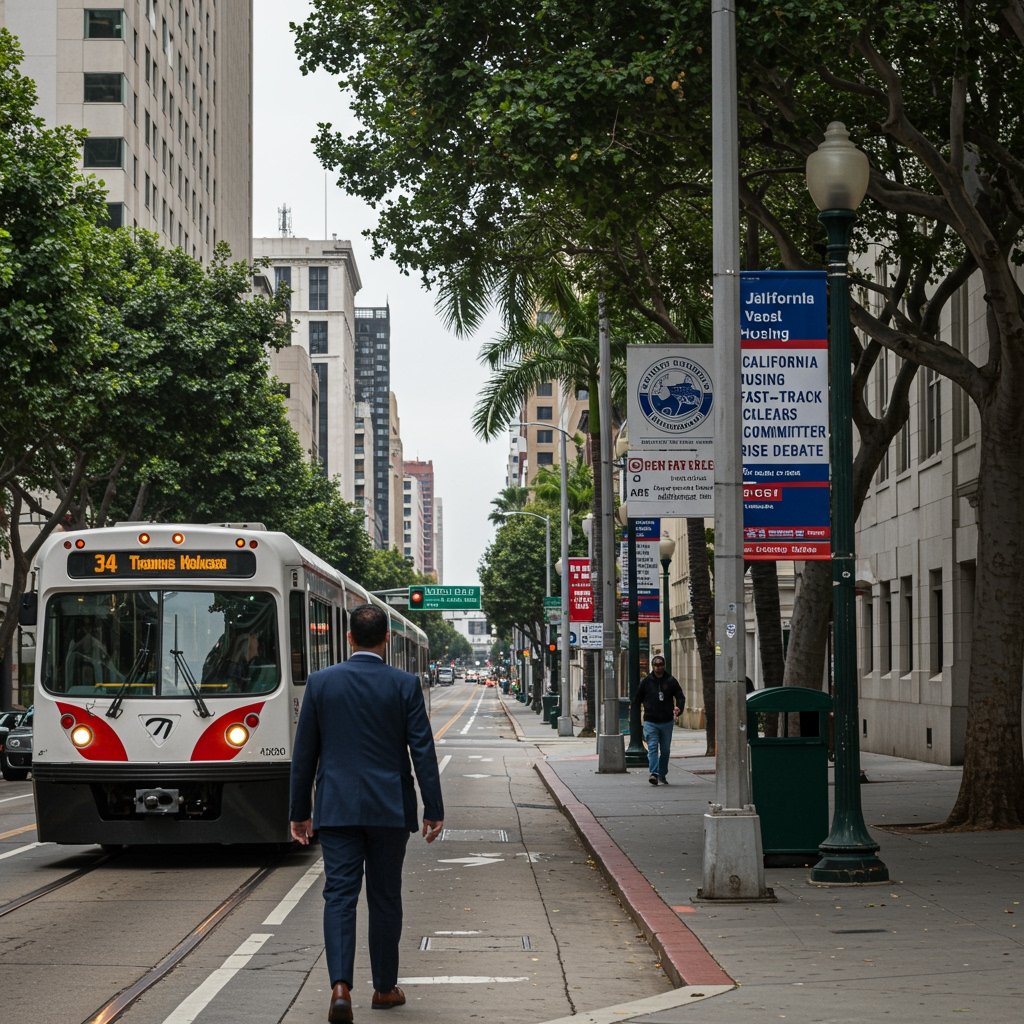California Bill to Accelerate Transit Housing Development Moves Forward
SACRAMENTO, CA – A legislative effort aimed at tackling California’s persistent housing affordability and supply crisis achieved a crucial milestone today as a significant bill proposing to streamline the approval process for multi-unit residential developments located near public transit hubs advanced through a key legislative committee. Assembly Bill 2405, authored by Assemblymember Lena Chen (D-San Jose), successfully navigated the Assembly Local Government Committee, signaling growing momentum for state-level intervention in local land-use decisions.
Authored by Assemblymember Chen, who represents parts of the heart of Silicon Valley, Assembly Bill 2405 seeks to significantly accelerate the pace of housing construction in areas well-served by public transportation. The core mechanism of the bill is the streamlining of zoning and environmental review processes – two areas frequently cited as major impediments to new construction in California. Specifically, the bill targets multi-unit housing developments proposed within a half-mile radius of major transit stops across the state. By reducing or simplifying the often lengthy and complex approval pathways associated with these reviews, proponents argue that AB 2405 could shave years off development timelines, making projects more financially feasible and ultimately increasing the state’s housing stock more rapidly.
The Rationale Behind Streamlining
The impetus for AB 2405 and similar legislation stems directly from California’s dire housing shortage. Decades of underproduction have led to soaring housing costs, making it increasingly difficult for low- and middle-income families to live in the state, exacerbating homelessness, and hindering economic growth. Proponents of the bill, including housing advocates, developers, and density proponents, contend that simply relying on traditional local approval processes has proven insufficient to meet the scale of the crisis. They argue that concentrating housing near transit aligns with climate goals by reducing reliance on cars, promotes walkable communities, and leverages existing infrastructure effectively.
Supporters view AB 2405 as a necessary tool to overcome ‘Not In My Backyard’ (NIMBY) opposition that often delays or derails projects in desirable, transit-rich areas. They believe that state mandates are sometimes required to ensure that local land-use policies contribute to the broader state goals of housing production and affordability. The bill’s focus on transit corridors is not accidental; these areas are often already zoned for higher density or are seen as logical locations for growth due to accessibility.
Opposition Voices Concerns Over Local Control
Despite the urgency cited by supporters, AB 2405 faces considerable opposition, primarily from representatives of suburban municipalities and organizations advocating for local control over land use. These opponents voice significant concerns that the bill represents an unwarranted overreach by the state government, eroding the ability of local elected officials and residents to shape the development of their own communities. They argue that decisions about zoning, density, and design should remain at the local level, where specific community needs and characteristics can be better understood and addressed.
Critics also raise practical concerns regarding the potential strain on existing local infrastructure. They argue that rapidly accelerating development near transit stops without commensurate investment in water systems, sewage treatment, schools, parks, and roads could overwhelm current capacity, degrading the quality of life for existing residents. Representatives from several suburban municipalities were particularly vocal during the committee hearing, expressing anxieties about unfunded mandates and the loss of local discretion in managing growth.
Environmental concerns, ironically, are also raised by some opponents despite the bill’s intention to streamline environmental review. They worry that a hurried review process might overlook critical local environmental impacts or reduce opportunities for public input that the current California Environmental Quality Act (CEQA) process, however cumbersome, provides.
Committee Deliberation and Vote
The hearing before the Assembly Local Government Committee featured robust debate, with proponents highlighting the necessity of urgent action on housing and opponents emphasizing the principles of local autonomy and potential negative impacts. After hearing testimony from Assemblymember Chen, constituents, advocates, and opponents, the committee members cast their votes.
Assembly Bill 2405 ultimately passed the committee with a decisive 8-3 vote. This vote reflects a complex political landscape where the state’s housing crisis is increasingly forcing difficult choices between state intervention and traditional local authority. The strong vote margin suggests that a significant portion of the committee members were persuaded by the arguments for state-level streamlining as a vital measure to address the housing emergency.
What’s Next for AB 2405
The passage through the Assembly Local Government Committee is an important step, but it is only one stage in the lengthy legislative process. AB 2405 will now move to other relevant Assembly committees for further review and potentially amendments before it can be considered by the full Assembly floor. If successful there, it would then proceed to the State Senate, where it would undergo a similar committee process before potentially reaching the Governor’s desk for signature.
As it progresses, the bill is likely to continue generating significant debate between those who prioritize rapid housing production through state mandates and those who champion local control and cautious growth. The fate of AB 2405 could have substantial implications for the future pattern of development in California, particularly in its transit-rich corridors.



















